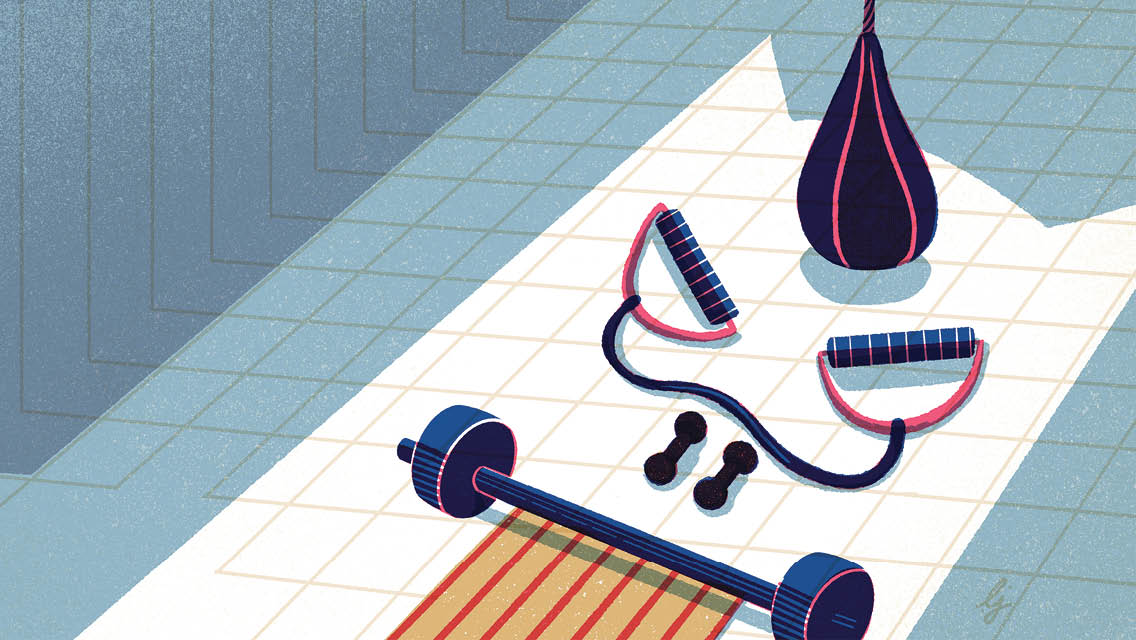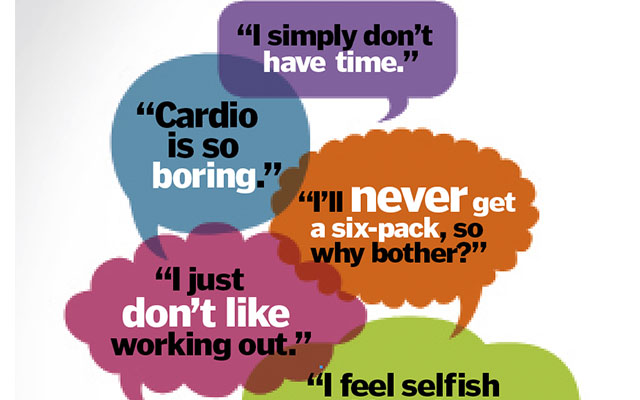There’s a voice inside my head and it routinely tries to convince me to stop short in my workouts — even when there’s really no good reason to do so.
I call this my Monster voice, not because it’s particularly frightening, but because it reminds me of the children’s story The Monster at the End of This Book authored by Jon Stone and illustrated by Michael Smollin. The 1971 book is a classic and the basis of a 2020 animated special, but if you need a refresher (or, perhaps, an introduction), here goes.
Sesame Street’s Grover is horrified to learn that there is a monster at the end of the book, and he begs the reader to stop reading! He ties the pages shut and cements them together with bricks.
With each failed effort, Grover tries a new method to keep the reader from turning yet another page. All to avoid the monster at the end of the book.
My Monster voice doesn’t speak up often, but when it does, it is desperate — like Grover — to get me to stop what I’ve set out to do.
The Monster voice’s objections to my working out vary. Sometimes the voice is practical, telling me I’m too busy (with work, with family, with social obligations) to spare a few moments to lift, bike, hike, stretch. Other times it tries to be helpful, suggesting I stop what I’m doing before I get injured.
Sometimes the Monster gets mean and tells me I’m wasting my time, that my efforts won’t translate to reaching my goals. Or it might tell me I’m not strong enough to put in the hard work — or that I’m not working hard enough, so what’s the point of trying at all?
Yet other times the voice is sneaky, trying to convince me that I’ve done enough already. What’s the harm in running three miles instead of the four I had planned? What’s the harm in skipping the last set of pendulum squats when I’ve already done five sets? What’s the harm in dipping out on my cool-down stretches altogether?
“You’ve done so much already,” the Monster voice trills, coaxing me to release the gas pedal. “What’s the harm?”
What’s the harm, indeed.
My Monster voice is not my body, my intuition, or my coach. It is something else that I suspect all of us carry inside: a voice of self-doubt. A voice of self-sabotage. A shadow of my “best” self.
Regular readers of this column know I’m a huge proponent of listening to my body and following my intuition as closely as my coach’s program. If I need to modify my workout plan and prioritize recovery, I do so without guilt, knowing that honoring my body and mind in the here and now will make me stronger in the long run.
But my Monster voice is not my body, my intuition, or my coach. It is something else that I suspect all of us carry inside: a voice of self-doubt. A voice of self-sabotage. A shadow of my “best” self.
I don’t know why it’s there or precisely what makes it speak up at some times and not others. But I have learned that it is something separate from my best interests — a voice that I would be smart to listen to but not obey.
In the book, Grover reaches the end only to discover that the monster at the end of the book was him all along. (To borrow lyrics from Taylor Swift, Grover learns that “it’s me, hi, I’m the problem, it’s me.”)
It’s taken me years to figure out how to handle my Monster voice when it speaks up. I used to believe it, mistaking it for wisdom from deep inside myself. I tried ignoring it, and fighting with it, pushing myself even harder just to prove to the Monster (to myself) that I could — sometimes pushing myself too hard in the process.
Nowadays, when the Monster voice interrupts a workout, I listen. I nod. I might even say, “Thank you, Monster.”
Because when I name the thing — really, when I name this part of myself — it loses its power to scare, bully, or otherwise control me. I become able to distinguish between listening to my body’s innate wisdom and unconsciously sabotaging my own efforts.
And in doing so, I can finish my training safely and confidently, knowing the foreboding Monster at the end of my workout was really inside me all along.





This Post Has 0 Comments